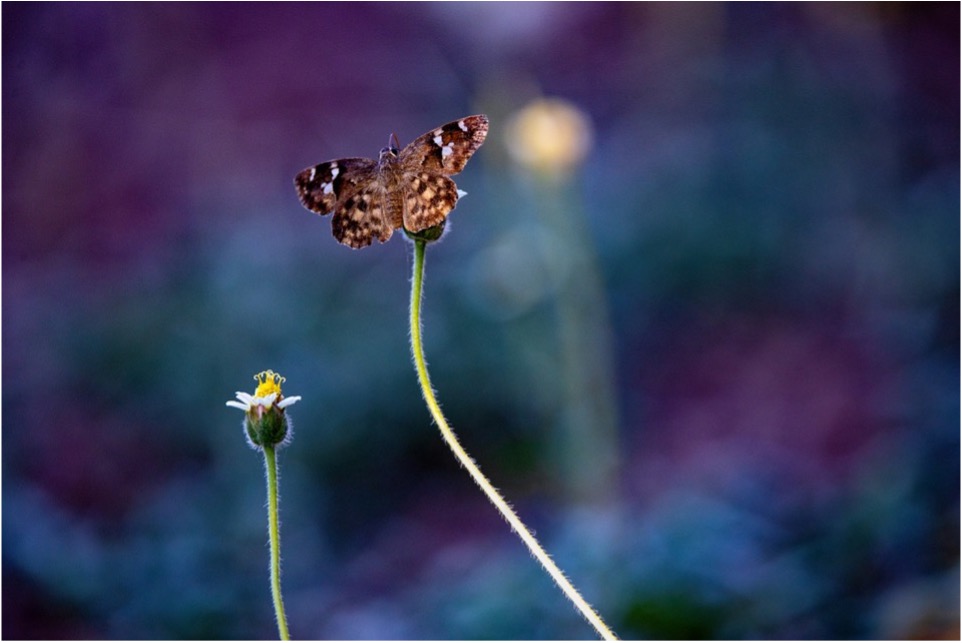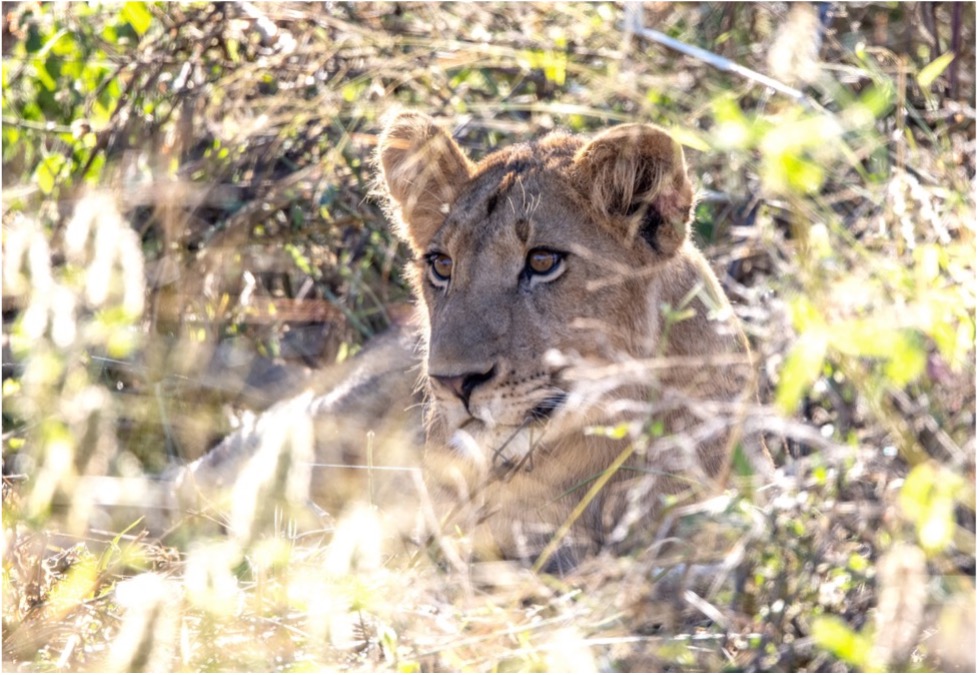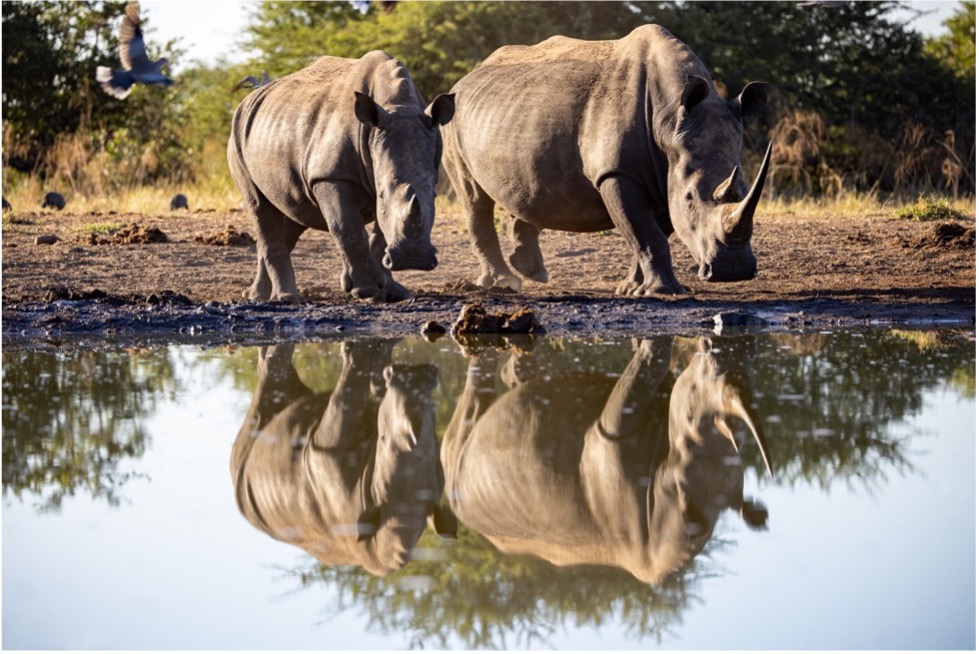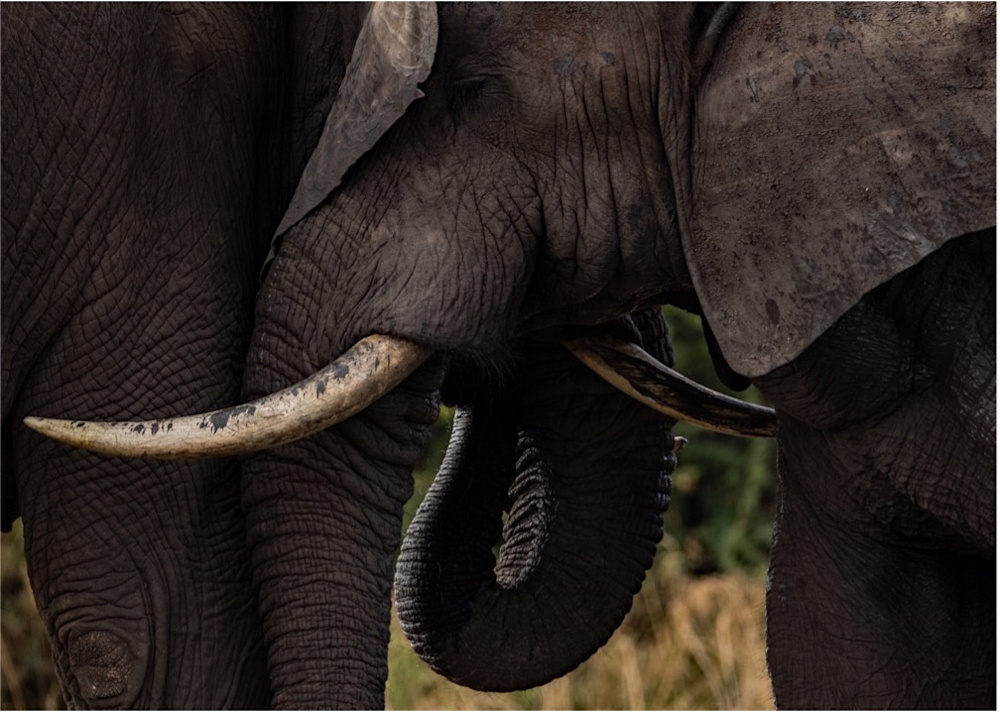June 2025
Pamushana Lodge
Share:
Pamushana Lodge: June 2025
The winter chill creeps in during the night and some mornings have been dressed in thick mist, but by mid-morning we have clear, warm, winter lowveld days. As the sun sets it gives rise to a riot of colours filtering through the clouds. The sightings this month have been excellent. One outing even racked up the “Big Five” on morning drive. This was pretty easy considering that at Croc Creek, which is in the valley below the lodge, there was one leopard, four hyenas, one bull elephant and two lions. The leopard had killed an impala which attracted the hyenas and lions. Adding buffalos and rhinos to a start like that was a piece of cake!

A sightings snapshot for June follows:
Lions
There has been significant lion activity, and they’ve made a variety of kills including buffalo, giraffe, zebra and warthog.
- Nduna Pride: Six members were seen at Nduna Dam, including a mating pair. Later in the month eight members were seen in the same area: two males, five lionesses and one year-old cub. Then six lionesses killed a big female buffalo. One of the lionesses displayed her formidable strength by dragging the buffalo carcass by herself. Four members of the pride killed a young giraffe in Banyini. Twenty hyenas were kept waiting for the leftovers, as were six black-backed jackals.
- Hippo Pride: This pride was seen east of the swamps, in the same area as a breeding herd of elephants. Eight members of this pride as well as four cubs were seen sleeping in the riverbed below Chikwete Cliffs.

- Coalition of three males: This coalition killed a buffalo near Kwali. They alternated between feeding and resting with steadfast intention. Hyenas wisely waited their turn.
Leopards
- The majority of sightings have been of the female leopard in the Ultimate Drive area. We hope her cubs are safely hidden and well fed. She was lying on a rock when two impalas came bolting past. She jumped up and was wanting to hunt, but a wild dog dashed into the scene chasing the impalas. On another occasion she was seen feeding on a buffalo calf carcass. That’s an impressive kill for a female leopard. She was also seen snacking on a dassie, in addition to the impala carcass she had at Croc Creek, so she is a formidable hunter and provider.
- On the Hippo Valley side a leopard was seen crossing the road, and making its way through a group of three white rhinos. The rhinos fled in all directions.
Wild dogs
- Its denning season! The pack of eight on the Hippo Valley side seem to be denning in the same area as last year.
- An incredible sighting was watching wild dogs running on the road and then hunting and chasing impalas. They killed an impala but hyenas came to steal it. There was a big fight and that attracted some lions that were in the area, and they barged in to steal the impala carcass.
- Another standout moment was watching wild dogs running through a breeding herd of elephants, which upset the elephants greatly. The wild dogs caught an impala close by and we saw them and the elephants altogether, as well as an opportunistic hyena that didn’t get its way.
Rhinos

White rhinos:
- There are daily sightings of white rhinos, always. Often the sightings are of multiple crashes resulting in high numbers of white rhinos seen on a drive. Highlights for the month include seeing two rhino mothers with tiny calves at a waterhole. Another far more dramatic scene was of five white rhinos fighting over a drinking space. One male was very aggressive and challenged the others. He had realised that a nearby female was in breeding condition, so he didn't want other males to be near her.
Black rhinos:
- You never quite know what mood black rhinos will be in. One gave a charge twice before running away, another stood on the side of the road and made few steps towards the vehicle. Then there was the jackpot of seeing six black rhinos along Pamushana Access Road. But the ultimate was probably the four black rhinos that waded towards the cruising boat on the Malilangwe Dam and gave the guests the sighting of a lifetime!
Elephants

- Breeding herds have been seen with young calves, cows and young bulls. The mature bulls have been keeping to themselves, and then gathering to drink at the permanent water sources. Some of the breeding herds are so vast it is not uncommon to see other animals dotted about in their midst, such as when three black rhinos were seen among them, at sunset in the Hippo Valley swamps.
Hyenas

- A delightful scene was seeing a hyena mother suckling her young one. Three hyenas were on the side of the road, huddled together to keep warm. The baby made a laughing sound, begging for milk, and then happily suckled.
- A pack of hyenas was seen feeding on a wildebeest carcass, on Pamushana Access Road.
- Most of the other hyena sightings have been of them in the company of lions and wild dogs as they wait for a turn to scavenge from the other predators’ kills.
Buffalos

- Herds in their hundreds have gathered to drink at Chikwete, Hwata, and Banyini.
- A beautiful sight was of a herd drinking at the river. They all descended a steep bank to the water, then lined up along the water’s edge. It was just as incredible to hear the sound of gallons of water being drunk.
Plains game
- The plains game of giraffe, zebra, wildebeest and impala are abundant. There were a few sightings of hartebeest, eland and sable too.

- It was surprising to see two kudu cows running towards the water of Sosigi Dam, jumping in and swimming across. Within minutes we saw a big crocodile following behind the kudu. Luckily the kudu managed to cross to the other side of the dam. We suspect wild dogs must have chased them into the water, but we didn’t see them and they didn’t pursue their quarry.
Other sightings/observations
- A brown hyena was seen from the West Valley Road.
- Pangolin tracks were seen heading north on Pipeline Road.
Boat cruises
- These are just the best! So zen, so relaxing, and the most beautiful way to appreciate the scenery, sunset and sundowners. On the wildlife front birds, hippos and crocodiles are guaranteed. Bird enthusiasts counted 28 different species on one outing. A highlight was seeing a pied kingfisher that had caught a small bream and was tenderising it by beating it on a tree. There were so many wildlife bonuses this month that included seeing elephants, black rhinos, lions, buffalo, waterbuck and impala on the shoreline.
Photographic hide
Hwata Hide is the place to be! The sheer number and diversity of animals that come to this pan to drink is incredible, and being inside the sunken photographic hide gives you unprecedented wildlife viewing.
- This month our guests were treated to sightings of bull elephants, rhinos, buffalo herds, hyenas, lions, hartebeest, wildebeest, warthog, giraffes, zebras and impalas.
- It was interesting to see two zebra stallions put up a fight - they reared up on their hind legs and pawed and bit at each other.
- Some of the elephants forgot their manners when they squirted mud from their trunks on our guests inside the hide!
- Some animals waited patiently to take their turn to drink. Others did not. One elephant bull kept on chasing the zebras and wildebeest that wanted to drink. One zebra chased a warthog from the water. Three swollen-bellied male lions got charged by a white rhino, but then a male elephant challenged both the rhino and lions, making sure he dominated the waterhole.
Fishing
- It’s not the greatest time for fishing, as the water is too cold for the fish to be actively feeding.
Rock art
- Having a vast collection of rock art hidden among the stone galleries is something we love to share with our guests, and they often reflect that seeing it was a highlight of their stay.
Gonarezhou National Park

- Lots of elephants were seen on the day trips to Gonarezhou National Park which is to be expected. A lucky sightings was seeing a pride of lions too. But the most satisfying sight for us was seeing tracks of both black and white rhinos in the park, thanks to the successful translocation of rhinos there, many of which have come from Malilangwe.

By Jenny Hishin
Author / Field Guide